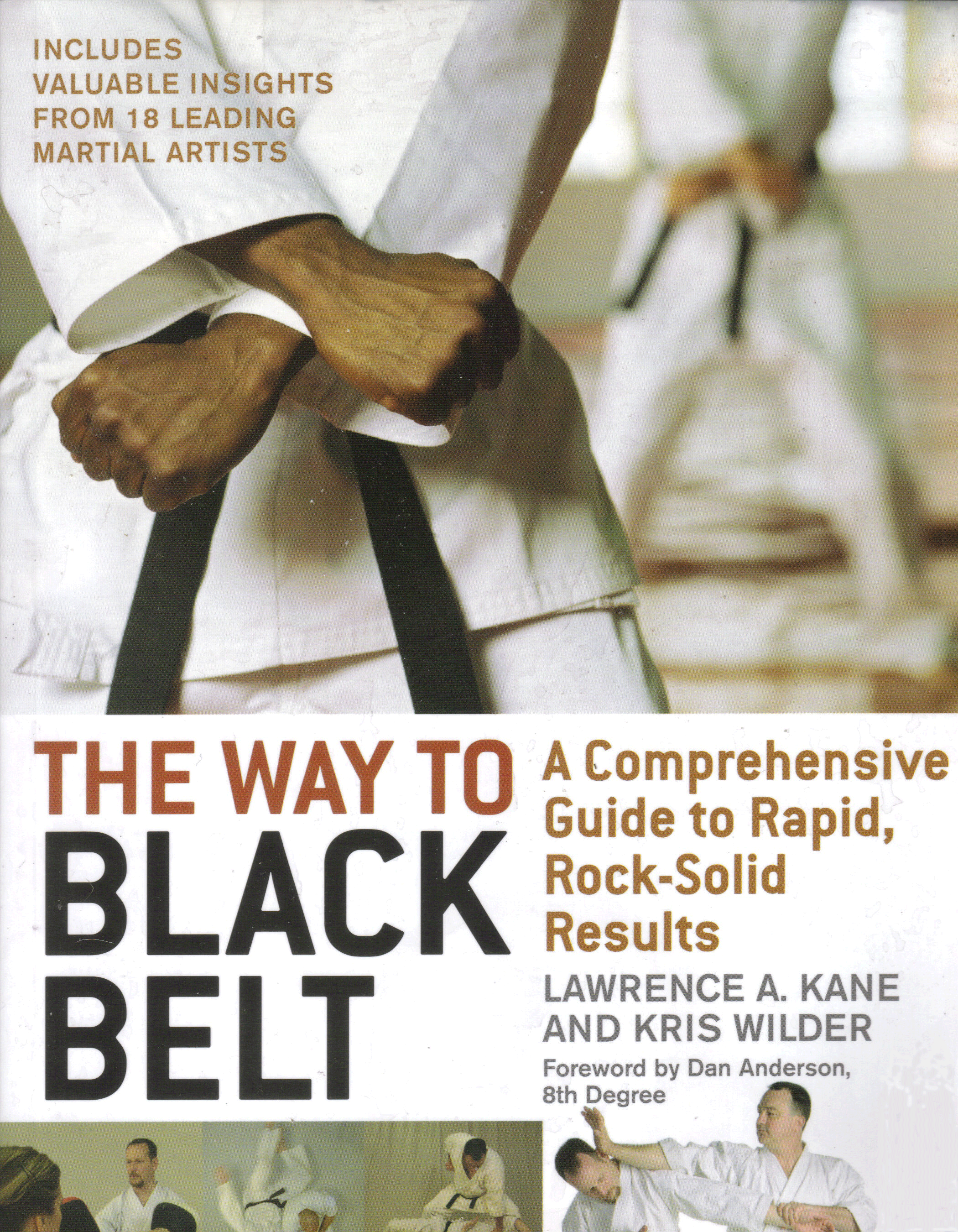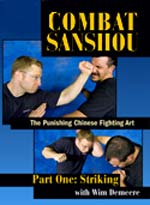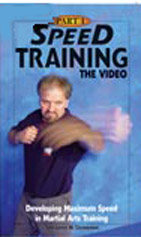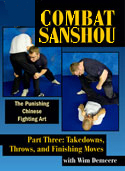Marc MacYoung?
Dianna Gordon MacYoung?
Animal E-list
Crime Avoidance Lectures
Crime Blog
Colorado Classes
Contact Us
FAQs
Hosting A Seminar
Crime Prevention
Expert Witness
Knife Defense
Law Enforcement
Martial Arts
Military
Movie Consulting
Women's Self-Defense
Links
Our Linking Policy
On-line Store
Train with MacYoung
Testimonials
Terms of Use
Topics
of Interest
To make a business decision, you don't need much
philosophy; all you need is greed, and maybe a little
knowledge of how the game works.
Bill Watterson
On this page:
The Business of Running a Martial Arts School |
What Makes A McDojo? |
Choosing a Martial Arts School |
High Student Turnover |
Advertising |
Specialized Equipment/Walking Billboards |
Contracts |
Padding Information |
Lowering Standards |
Rank Inflation |
Belt Factories |
Volunteers |
What Martial Art Style Is Best for Self-Defense?
Let me first state that I am a capitalist swine. There is no way I will begrudge someone his or her right to make a living, much less a profit.
Where I get somewhat cranky is when it comes to profiteering while providing information that can get people killed.
And unfortunately when it comes to teaching martial arts as self-defense, that isn't hyperbole. Self-Defense is a lot more than just punching and kicking.
Let us remind you that teaching martial arts and self-defense is a business! In order to keep the dojo doors open, to pay the rent, to keep the electricity and water from being shut off -- certain criteria must be met. And this criteria has nothing to do with ancient Oriental customs or martial mysteries. It has to do with what works to stay in business in a capitalist system.
One of the first things that you learn in a business class is that most enterprises fail. While this is often because they are underfunded, a bigger reason for failure is because you have to do things a certain way. And these methods are time-tested and proven business practices. Many businesses fail because owners attempt to run them like they run their personal lives rather than by these professional standards.
And one of the biggest professional standards of them all is: The customer comes first.
This is doubly true in a service industry. And first, last and foremost: Martial arts instruction is a service industry. If the instructor isn't providing what you want, move on. Let him try to pay the bills without your money. As the consumer, you have this right.
Why is it important to look at martial arts/self-defense instruction this way? Because many practices in these schools do not meet normal business standards. In no other for-profit business do you get the kinds of behavior that you see in many commercial martial arts schools. Although many fail, others thrive. In fact, the more popular ones flourish. How can that be?
This page is an in-depth look at common money-making tricks of commercial martial arts schools. If you are primarily interested in signing your children up for martial arts we suggest that you look at the following sections on this page: business of martial arts school, choosing a martial arts school, specialized equipment/walking billboards, Contracts and Belt factories. In addition look at the page on kids and martial arts.
The Business of Running a Martial Arts School
We take a look at the different kinds of schools and
common business practices found in
martial arts schools. If you're looking to take
martial arts lessons this page will introduce you to the
business realities of what you'll encounter.
What Makes a
McDojo?
A term you will find quite frequently on these pages is
McDojo. (Also Belt Factory, McKarate, Watered-down and
sports based). As you can guess these are not
complimentary terms. They do, however, address a very
real problem among commercialized schools, namely high
priced, low quality, fast paced
padded and
unqualified -- instruction. For exorbitant
fees, these schools offer you fast advancement and
ranking in the martial
arts. The problem with all of this is that despite this
is that a) You still can't fight your way out of a wet
kleenex and b) how you were taught to move is actually
physically damaging to your joints. So how do you spot a
McDojo? And while we're at it,
how do martial art schools become a
McDojo?
Choosing a Martial Arts School
How to pick and choose a
martial arts school. An invaluable tool for parents
who want to sign their children up for martial art
lessons.
Return to top of page
High Turnover
We know schools where students have been perfecting
their art for over 20 years. We also know schools that
promise you a black belt -- guaranteed -- in on year.
The simple fact is in schools like that, the
'generation' of students is like fruit flies. They come
and go. If there is a high
student
over turn in a school, that
should tell you something
Return to top of page
Advertising
We know an 'Old Skool' instructor who tells new students
"Either your false expectations about the martial arts
will leave or you will." His approach is that he isn't
going to change his martial art to meet what the
students expect martial arts to be. He isn't there to
teach the Anime (manga), Teenage Mutant Ninja Turtles,
Power Rangers, the Matrix's version of the martial arts.
Nor is he there to teach the Ultimate Fighting
Championship (UFC) as martial arts. In short, anything
you saw it on TV, has to go before he can teach you
anything. Unfortunately most -- if not all --
commercialized schools have decided to allow students to
keep their misconceptions so the school can keep the
students. The problem with this is they have watered
down their curriculum to the point that they are
allowing the student's expectations and
marketing
demands to dictate what they
teach AS martial arts.
In case you haven't
figured out why this is 'bad,' since most people believe
they are learning a system capable of defending them, do
you really want to stake your life on a move from a
Japanese animation movie? Or would you rather have
something that really works?
Return to top of page
Specialized Equipment/Walking Billboards
You too can be a walking billboard for your school
owner. The appeal of group identity,
specialized
equipment and how it is a cash
cow for a school owner who's selling it to you at
inflated prices.
Contracts
Be very careful about signing a
contract
before you know if your
child really wants to stay in the martial arts ... or
you for that matter.
Return to top of page
Padding Information
There comes a point where an instructor's well of
knowledge runs dry. When that happens what you will
often encounter is padding
Information. This this is functionally trivia
disguised as 'deeper revelations' with the soul purpose
of continuing to take your money.
Return to top of page
Lowering
Standards
NEWS FLASH! Paying a lot for instruction doesn't
mean quality instruction. Usually it just means that the
instructor has high overhead. There are many ways
an instructor can hide lowered
standards behind a big school
and a flashy demo team.
Return to top of page
Rank Inflation
There are martial art franchises out there that will
'guarantee' you a black belt in one year. There are also
all sorts of silly titles that individuals give
themselves after only a few years of training. This a
symptom of
rank
inflation.
Return to top of page
Belt Factories, (McKarate Revisited)
Want to see the business side that your instructor
doesn't want you to see? There's a lot of fakery
involved in the martial arts
business that you're paying for.
Return to top of page
Volunteers
One of the biggest, boldest and most blatant swindles
when it comes to commercial martial arts schools is
volunteers.
Remember we said that non-commercial schools are often run by a group of martial artists who are teaching for the love of the art? The distinguishing characteristic of these schools is that nobody makes their house payments from teaching. Proceeds from teaching are usually reinvested into the school or split among instructors. There is a real sense of community, friendship and shared interest in the martial arts.
The more successful commercial schools take this exact same sense of commitment and generosity and put it to work for the owner. In fact, they put it right into the owner's pocketbook.
One of the most common forms is using volunteers to teach. A spin has developed over the last few years insisting that students cannot fully understand the martial arts until they teach them. If you hear this enough times -- especially from the day you walk into the school -- you easily will be roped into this kind of free labor. Some schools even go so far as to make your teaching for them a belt requirement.
This is free labor.
Actually, it's worse than that. Because in most volunteer situations, you are not only teaching, but are still paying student fees. That means you are paying a money-making business to teach for them. No pay, no insurance, no workers comp, no overtime and no retirement. You not only provide your time and labor, but do so in order for more people to pay more fees to the school owner. If you teach a class of 30 people, and you are providing 31 fees.
There are countless other ways that commercial schools use volunteers for profit. Any professional will be approached for free services -- computer programmers, electricians, accountants, etc.. Nonprofessionals will be enlisted to do scut work. Even so-called barter deals take on a different perspective in this light. Someone who swaps student fees for their child in exchange for cleaning services really isn't getting a fair trade. That class is going to go on regardless if there are 30 or 31 students. The school, however, will not get cleaned without paying a cleaning service. What this convenient trade is doing is saving the school's owner hard cash outlay for no extra time, effort or investment. Remember, he's probably got a volunteer teaching the class.
Be extra careful about fundraisers and drives for school events, such at tournament teams -- especially if they involve travel. Return to top of page
Is (fill in the blank) Good for Self-Defense
Martial arts are not synonymous with self-defense --
even though they are promoted as such. This is such a
complex and oft asked question that we'll direct you to
a page specially dedicated to
answering it.

1)We draw a line between a full-spectrum martial arts supply store (which offers equipment, uniforms and literature for all kinds of martial arts styles) and school in-house stores. The main difference is that a full spectrum martial arts store doesn't require you to buy specialized equipment and uniforms, and then offer to sell them to you -- usually at an extraordinary markup. As of 9/05 the wholesale cost of colored belts from a major martial art supplier is two US dollars. Belts in these school stores often range between 8 and 10 dollars. Even when they offer it to you at a discounted rate of 6 dollars, that's still a 200 percent markup on an item that -- in a belt factory -- you will be buying every few months. While $6 doesn't sound like that much, not all uniform or equipment costs are this low. Return to Text
2) An example of a bogus explanation for something is high jumping kicks. The common story for such moves is that they were used to kick mounted warriors off horseback. The "wait a minute" light should go off right there. The equestrian standard measurement is a hand (4 inches). Average horses usually stand about 15 hands, that's 60 inches, or 5 feet. A man sitting on such a horse, would add up to three feet. In order to kick someone off a horse, you'd need to kick him in at least the chest, otherwise his legs would keep him in the saddle. This means you need to leap so your feet would be 7 feet off the ground. And do it in a kicking position, which would put your head at least a minimum of a foot higher than the horseman's! The world high jump record is just over 8 feet. And that kind of jump largely involves laying down and twisting out of the way as you go over the bar. Slam dunks into the basketball hoop involve the extra extension of very tall individuals' arms. And those are professional athletes. What we are saying is that without a trampoline, it is physically impossible to jump high enough to kick a man off a horse (much less an animal that is moving). Yet, this is a common justification for "flying side kicks." Our premise is that such kicks serve three functions: First, the instructors use them as a means to keep younger students busy. "Here kid, go off into a corner and jump around for a while." Second, the younger more athletic bucks impress the does, by showing their prowess leaping around. Third, these flashy, bouncy moves impress the heck out of potential customers. While these are real reasons, they are not martial in purpose. Return to text
3) Martial arts schools need insurance. Insurance companies take a dim view of schools that have high injury rates. Because of this, truly destructive and effective techniques cannot be regularly practiced at full speed and against a resisting opponent. While sports techniques can, and are, regularly practiced. Insurance companies cover sporting events because they have safety standards. These sporting styles are often mistaken for -- and promoted as -- the same thing as self-defense. They are not. Even the most ferocious sporting events seldom result in serious injury or being knocked unconscious. If that's the case, then how can you use the same techniques for self-defense? Return to Text
4) A trip to the Jefferies on-line Japanese/English dictionary tells us bunkai means "analysis, disassembly, demarcation." While it might not take a gigantic step to turn that into "application," you're going to need a catapult to make the leap to where it means "secret application hidden within the kata." Return to text
5) The only exception for this would be if an instructor took an obscure, little known art and filed for a trademark on the name. Even then, all it would take is for someone to stick the words "concepts" or "do" on the end and the trademark owner couldn't do anything. The key point here, however, is that the trademark would only apply to the specific style, not to anything that is similar. You could, for example, register the name "One Hung Low Silat," but you cannot trademark the term silat, because hundreds of styles of silat exist and schools using that name have pre-existed long before. The same with karate, kung fu or Tae Kwon Do. Return to text
6) Why Johnny Can't Read: And What You Can Do About It by Rudolf Flesch was first published in 1955 and lambasted the failure of the U.S. educational system to teach children to read well. It proposed an alternate means to teach reading. In the '90s this situation exploded when it was revealed that rather than fail (or hold back) substandard students, the school systems were passing them. This resulted in a large number of functionally illiterate students being graduated from high schools around the country. It was revealed that a large motivation for this "pass through" policy was parents bring suits against the school systems claiming their children were held back because of discrimination and persecution, instead of the child's poor performance. It also was revealed that various teachers would "pass" a problem student simply to remove him or her from their classrooms. Return to Text


Martial Arts America
Learn More >
Order Now!

Martial Arts Instruction
Learn More >
Order Now!

Meditations on Violence
Learn More >
Order Now!

Way To Black Belt
Learn More >
Order Now!

The Way of Kata
Learn More >
Order Now!

The Deadliest Men
Learn More >
Order Now!

Fighting Footwork of Kuntao/Silat
Volume 1
Learn More >
Order Now!

Fighter's Guide to Heavy Bag
Training (DVD)
Learn More >
Order Now!

Fighter's Guide to Heavy Bag
Training (Book)
Learn More >
Order Now!

Warriors: On Living with
Courage, Discipline and Honor
Learn More >
Order Now!

Combat Sanshou: Striking
Learn More >
Order Now!

Speed Training: The
DVD
Learn More >
Order Now!

Combat Sanshou: Kicking
Learn More >
Order Now!

Speed Training
Learn More >
Order Now!

Combat Sanshou:
Takedowns/Throws
Learn More >
Order Now!

Beyond Brazilian Jujitsu
Learn More >
Order Now!

The Deadliest Men
Learn More >
Order Now!

Pukulan Pentjak Silat
Learn More >
Order Now!

Reflex Action
Learn More >
Order Now!

Experience- & Reality-Based
Self-Defense
Learn More >
Order Now!
| About navigating this site | Animal List | Bibliography | Bullies | Burglary while on vacation | Classes in Colorado | Car Jacking | Children and Martial Arts | Child Safety | Criminal Mindset | Cults in MA/SD | De-Escalation | E-mail Dianna | E-mail Marc| FAQs | Have MacYoung speak about crime avoidance | Home Page | Home Defense | Hosting a Seminar | Fear | Five Stages of Crime | Knife Fighting | Legal Issues | LEO/Correctional Officer/EMS | Linking policy | Links | Martial Arts | Photo Gallery | Property Crime | Psychology | Rape | Robbery | Safe Dating | Self-Defense Training | Selling your books/DVDs on NNSD | Seminar Schedule | Stalking/Domestic Violence | Street Fighting | Terms of Use | Testimonials | Train with Marc MacYoung | Who is Dianna Gordon MacYoung? | Who is Marc "Animal" MacYoung? | Victimhood | Workplace Problems | Zero Tolerance | ||
| ? 1998-2008 No Nonsense Self-Defense, LLC. All rights reserved. |